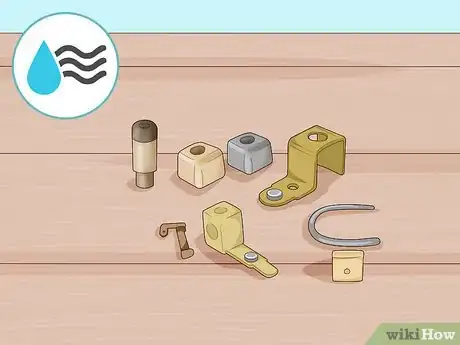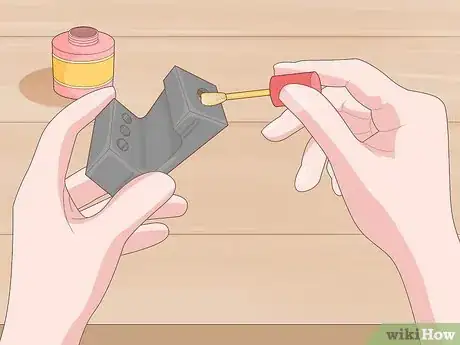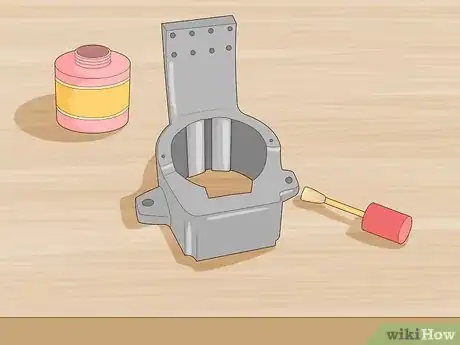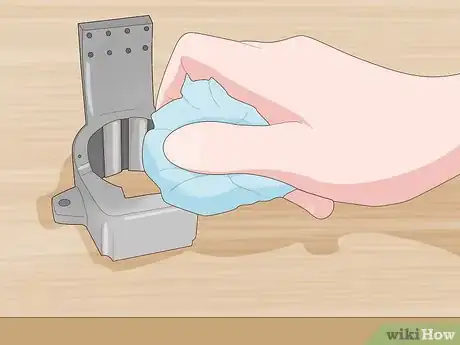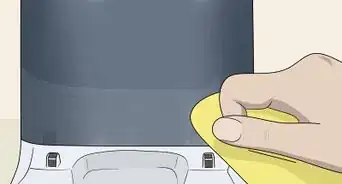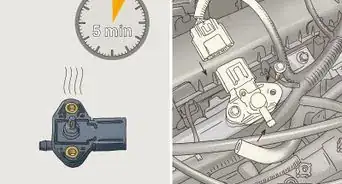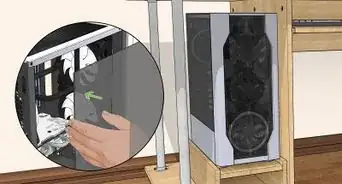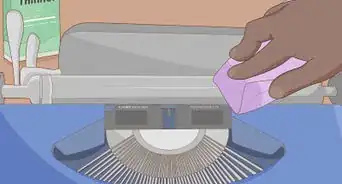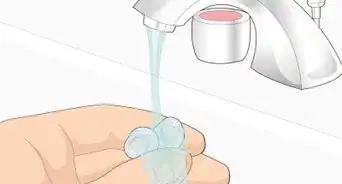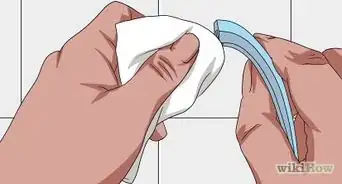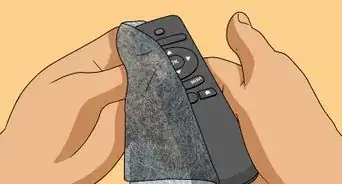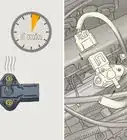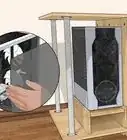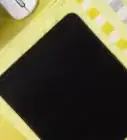This article was co-authored by Daniel Stoescu. Daniel Stoescu is a Master Electrician and the Owner and Operator of Home Tech Solutions, LLC in Hampton, Virginia. With over a decade of experience, Daniel specializes in wiring residential, commercial, and light industrial structures. The Home Tech Solutions team has over four decades of combined experience and offers comprehensive solutions for residential electrical needs.
There are 9 references cited in this article, which can be found at the bottom of the page.
This article has been viewed 80,673 times.
Electrical contacts may get dirty with normal use, which can affect an item’s performance. You can’t clean an electrical contact with water, but there are some products that are safe and effective. Try cleaning the contacts with a micro-brush and contact cleaning solution if it’s not too dirty. If the item is extra dirty, you will need to get a special cleaning product or kit.
Steps
Cleaning Contacts with a Microbrush
-
1Apply a cleaning solution to a microbrush. Micro-brushes are tiny, disposable cleaning tools that are used to reach into small spaces, such as cell phone charger slots. These are usually available at electronic and office supply stores, or you can also buy them online. Dip the brush into your cleaning solution. You can use a cleaning solution meant for cleaning electrical contacts, or try a household product, such as:[1] [2]
- Rubbing alcohol
- Acetone
- White vinegar
- WD-40
- Nail polish remover
Tip: For hard to reach electrical contacts, you might also try using a can of concentrated air or a pressurized contact cleaner. These can penetrate where even a microbrush won’t fit.
-
2Insert the brush into the contact or wipe it off. Make sure that the item is unplugged before you start cleaning it. Then, take the part of the brush that you dipped into your solution and insert it into the electrical contact slot, or wipe the brush across the surface of the contact if it is exposed.[3]
- Make sure that the brush is not dripping with the solution. If it is, dab it off on a paper towel before cleaning the contact.
Advertisement -
3Allow the item to dry completely. After you finish wiping the contact and you are satisfied that it is clean, discard the microbrush and place the item on a flat surface. Allow it to dry for at least 1 hour or until you are certain it is completely dry.[4]
- Alcohol dries quickly, so it should be dry in a matter of minutes, but a cleaning solution, vinegar, or nail polish remover might take longer to dry.
Using a Contact Cleaner Kit
-
1Read the manufacturer’s instructions for use. If you have purchased a special kit to clean your electrical contacts, read through all of the instructions that came with it. The kit may include multiple types of solution, which may only be used on certain types of metal, such as gold, silver, or copper.[5]
- The instructions should also provide information on how long to leave the product on before scrubbing or wiping it off.
-
2Use the provided cleaning tools to remove dirt and debris. It’s best to start by getting as much dirt and debris off of the contacts as you can without using the solution. Choose a brush that will fit into the slot if the contact is not exposed, or select any brush to clean an exposed contact.[6]
- The kit’s instructions might also specify which brushes are meant for certain types of contacts.
-
3Apply the solution as indicated by the instructions. Make sure that the item is unplugged from its power source first. Then, use the applicator brush included with the kit to apply contact cleaning solution to the contact. Cover the entire surface of the contact with the cleaning solution.[7]
- Once the contact is completely covered, check the time and leave the solution on for the amount of time indicated by the kit. This may range from a few minutes to a few hours depending on how dirty the contacts are.
- For example, you might need to leave the solution on overnight if the contacts are extra dirty.[8]
-
4Wipe off the surface of the contacts with a brush or lint-free cloth. After the solution has been sitting for the required amount of time, wipe or brush it off one more time. You can either use a brush to wipe away any remaining debris from the inside of a contact’s slot, or use a lint-free towel to wipe off an exposed contact.[9]
- If the contact still appears dirty, repeat the process.
Tip: If there is still a noticeable amount of debris on the item, you might also try rubbing the contact with an eraser. You can use a small pencil eraser or a large eraser depending on the side of the contact.[10]
Warnings
- Never submerge an electrical item in water or in any other solution.⧼thumbs_response⧽
- Never clean an electrical contact while it is still plugged in.⧼thumbs_response⧽
References
- ↑ https://mechanicbase.com/electric/how-to-clean-car-electrical-contacts/
- ↑ https://www.youtube.com/watch?v=hMSoghy-E7M&feature=youtu.be&t=17
- ↑ https://www.youtube.com/watch?v=hMSoghy-E7M&feature=youtu.be&t=23
- ↑ https://www.youtube.com/watch?v=hMSoghy-E7M&feature=youtu.be&t=17
- ↑ https://www.youtube.com/watch?v=bOt6ojo7Jfo&feature=youtu.be&t=51
- ↑ https://www.youtube.com/watch?v=bOt6ojo7Jfo&feature=youtu.be&t=76
- ↑ https://www.youtube.com/watch?v=bOt6ojo7Jfo&feature=youtu.be&t=86
- ↑ https://www.youtube.com/watch?v=bOt6ojo7Jfo&feature=youtu.be&t=120
- ↑ https://www.youtube.com/watch?v=bOt6ojo7Jfo&feature=youtu.be&t=130


